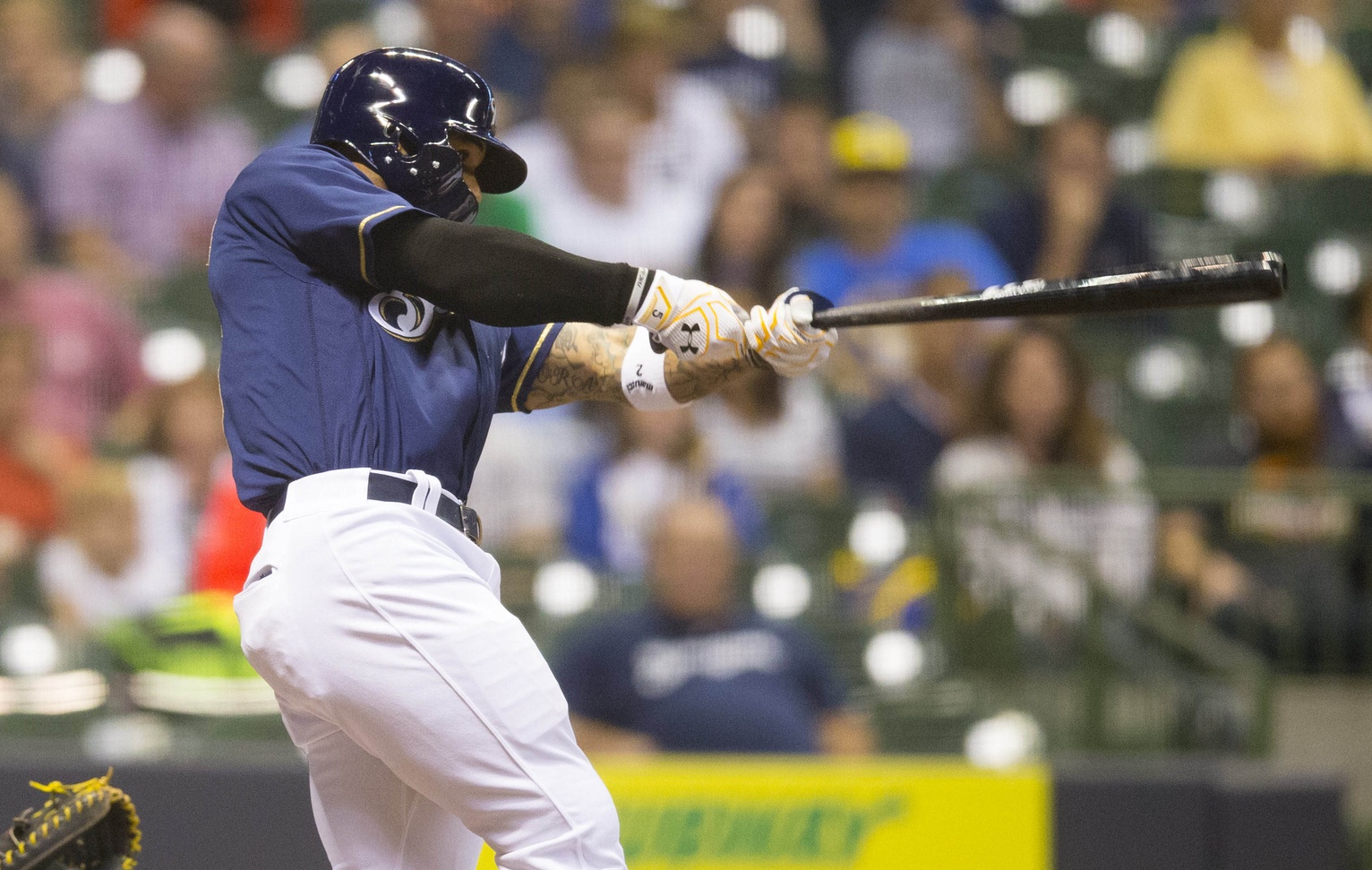Jonathan Villar’s 2016 breakout was one of the Brewers’ highlights of the year, if not the highlight for the rebuilding club. While the trade involving RHP Cy Sneed and Villar was a valuable move for the Brewers the moment it happened, Villar’s power/speed/discipline explosion exponentially increased the value of that deal. The resulting 4.8 WARP season firmly placed Villar in the Top 30 among all 2016 MLB position players, and among shortstops only Corey Seager, Francisco Lindor, and Carlos Correa were better. Sitting atop the league among a crop of 21-to-22 year old elite prospect shortstops vindicated Villar’s previous positions within the Astros Top 10, and the flexible position player will have a chance to reprise his success at second base, third base, shortstop, or the outfield in 2017.
One of the most interesting aspects of Villar’s offensive approach is his “luck,” which one might define as “favorable circumstances” in this case. After fluctuating between .360, .271, and .362 BABIP during his three part-time seasons, Villar posted a .373 Batting Average on Balls in Play in 2016, which is substantially better than the 2016 National League BABIP of .302. The Regression-to-the-Mean Hawks will flex their muscle in their 2017 Villar forecasts by stating “Villar was lucky and his BABIP will regress to the mean;” the reason BABIP is an intriguing aspect of Villar’s game is not simply that he is lucky (in the sense that he received undue benefit from circumstances), but that he creates favorable circumstances throughout his game.
If you’re an opposing team, how many ways can Villar beat you?
- He can put the ball over the fence 2.8 percent of the time (improving from 1.5 percent prior to 2016).
- He can hit for extra bases (overall) 8.8 percent of the time (improving from 6.7 percent prior to 2016).
- He can draw a walk 11.6 percent of the time (improving from 8.1 percent prior to 2016).
- He can hit better than .300 on ground balls (where the league bats .245).
- He can hit .438 on bunts (where the league bats .362).
- He can slug .768 on flyballs and 1.267 (!!!) on line drives (where the league slugs .527 and 1.043, respectively).
- He can do so while hitting 33 percent groundballs, 11 percent flyballs, 16 percent line drives, 3 percent bunts (where the league hits 31, 18, 18, 1.5, respectively).
These attributes are what make Villar arguably the most exciting Brewers player, and perhaps the Brewers player most likely to build on his 2016 success in the coming season. For consider a scenario in which Villar’s power dwindles somewhat; he can use his discipline and speed to reach base through walks and running out groundballs and bunts; where his speed takes a take back, Villar can drive the ball and use his discipline to yield solid plate appearances; if his discipline falls back slightly, Villar can still aggressively benefit from driving the ball and running out groundballs; and so on and so forth. There are a handful of ways that Jonathan Villar can succeed at the plate, which makes his .291 Total Average a solid foundation for judging his 2017 potential: how far can Villar go at the plate?

Great article, I share your enthusiasm. While not R Henderson leadoff production yet, T Raines type numbers are probable, and without the turf advantage. And from a middle infielder.